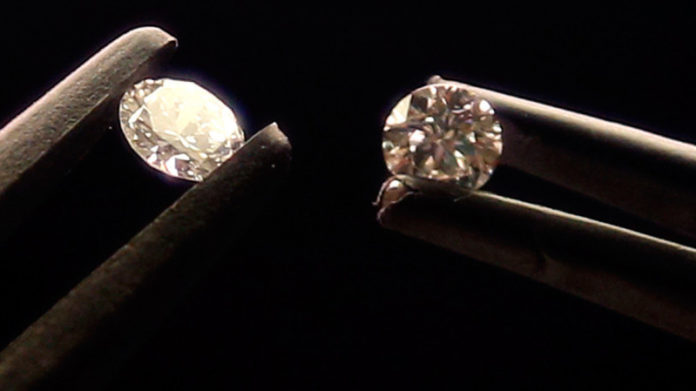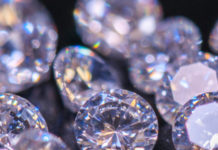
GIVEN the choice and the money, which would you prefer: a holiday in the south of France or a new diamond?
In the grip of winter, the idea of gently sipping a Grand Cru Bourgogne in Mediterranean sun sounds better than the allure of cold, white jewellery, regardless of the occasion (or even the love).
According to a Morgan Stanley report, ‘doing stuff’ trumps ‘getting things’. Experience beats ownership especially to a Covid-19 blighted society where the transitory nature of life has been underscored.
This is one of the reasons why the bank thinks the much-anticipated recovery in the diamond market may have limited upside.
On the face of it, the diamond market is storming back.
De Beers recently hiked high value rough diamond prices, the stones it sells to polishers and cutters, around 10%. Its sales in 2021 are $2.5bn, the most since 2021, and are estimated by Goldman Sachs to comprise 6% of Anglo American’s 2021 earnings before interest, tax, depreciation, and amortisation. (Anglo owns 85% of De Beers).
Its CEO, Mark Cutifani, has told Miningmx in the recent past that glittery statements of affection for one’s relevant other will be a certain person’s preferred antidote to the gloom of the past 18 months.
Retail data suggests this may be right, but only to an extent.
MasterCard Pulse, a monitor of in-shop and online sales, said sales increased 11% year-on-year for June and increased 10.4% compared to June 2019. Consumerism is certainly coming back as vaccination rates grow globally.
Yet Morgan Stanley discerns another threat that may muzzle the diamond market: the increasing popularity of lab-grown diamonds. Anglo’s ‘Lightbox’ range of lab diamonds has had success in establishing price differentiation between natural and artificial diamonds, the latter falling 60% in price only a few months after launch in 2019.
But marginal consumers will be drawn to lab diamonds over their mined counterparts, assisted by the fact that diamond firms are spending less on marketing than they used to, says Morgan Stanley.
De Beers’ spending has fallen from 5% of market share, which comprised 50% of the total about 20 years ago, to 2% today. Furthermore, the value of mined diamonds has increased over time as sources of production have shrunk.
This last point is a critical subtlety. Diamond market bulls claim that production is falling and that there’s no obvious reserves replacement, partly owing to a dearth of exploration spend. This is true: production has declined a fifth. However, the value of diamonds produced as measured per average carat is only 10% lower. Value is more important than volume in understanding the diamond market, the bank believes.
Says Morgan Stanley: “Our analysis additionally suggests attractive returns are on offer in the lab-grown space, with 20%+ RoCE (return on capital employed) looking achievable.
“This could potentially attract more capital, and drive further supply growth, as consumers become increasingly comfortable with the product. This, in our view, limits the upside for miners from an otherwise supportive supply-demand outlook”.
Carving a niche
For now, however, diamonds are back.
Bank of America said in a recent report that there will be average growth in diamond prices of about 13% this year. “Disruptions, lockdowns, and business closures in the supply chain are still experienced, but demand for rough diamonds in 2021 is strong and comparable to pre-pandemic years,” it said.
Yet in making the bull case for diamond, it acknowledges the lab-grown diamond market is carving a niche for itself. The market segment is growing fast due to technology and acceptance across the value chain, it said. While retail pricing declined in 2020 and wholesale prices remained stable – leading to margin contraction – further price drops could increase lab-grown diamonds’ accessible market, it said.
One plus for naturally occurring diamonds however is that if lab-grown diamond pricing remained low this “… could push [the market] into the fashion category potentially protecting natural diamonds”.










